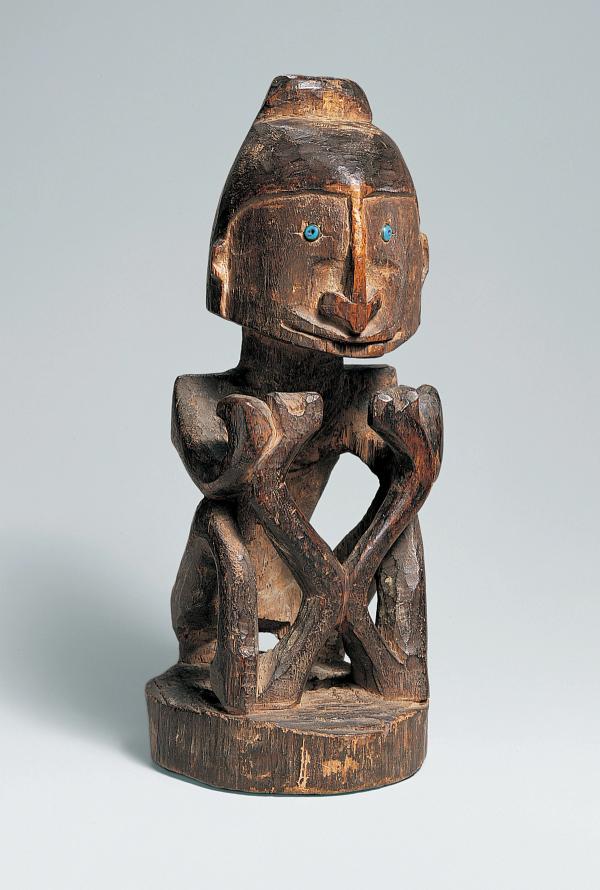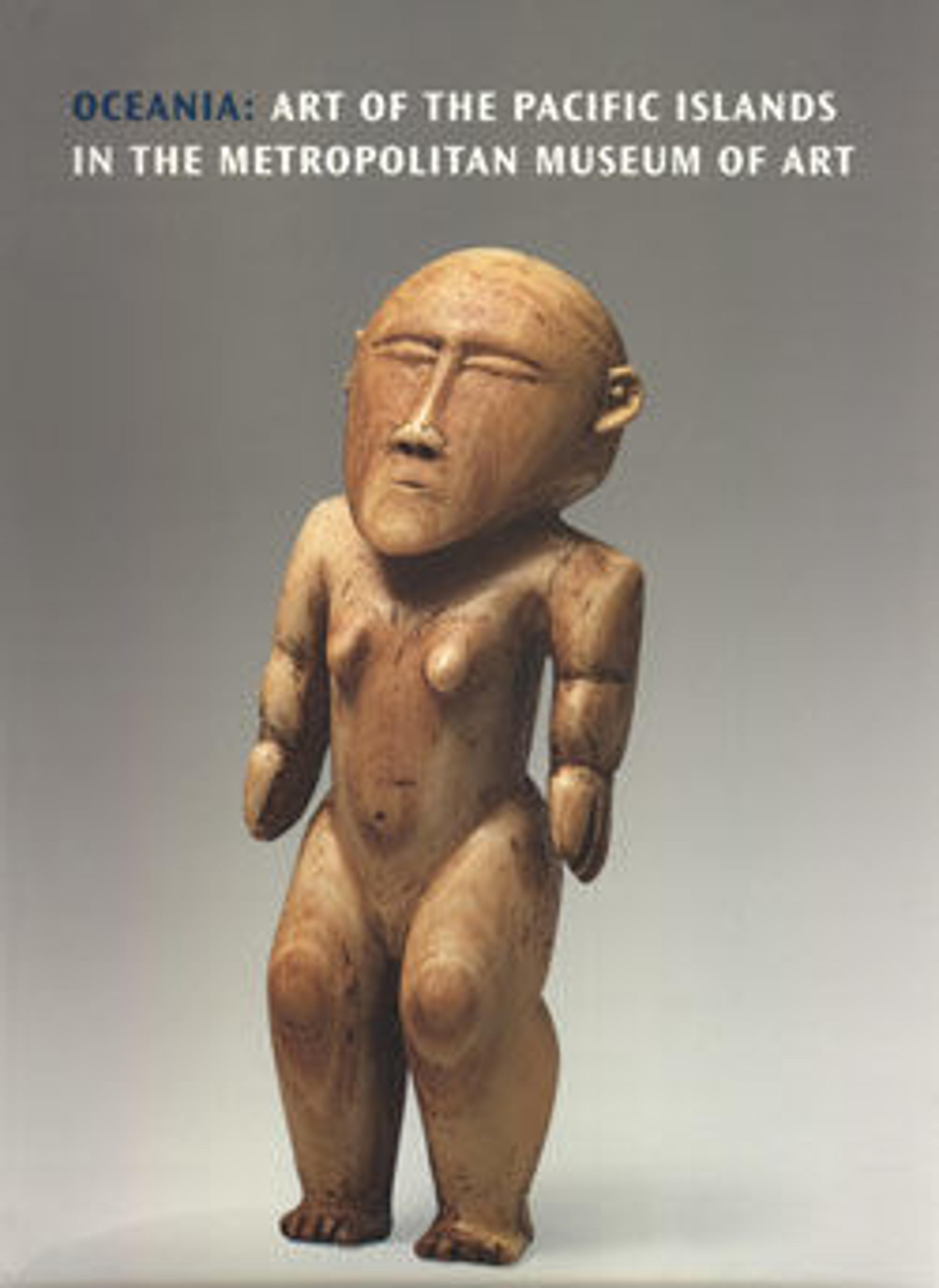Korwar (ancestor figure)
Korwar imagery was highly conventionalized, depicting the ancestor in a seated or standing position with the robust head and arrow-shaped nose that are the hallmarks of the style. Although the sex of the figures is often difficult to determine, all were originally male or female, depending on the gender of the deceased. Normally kept in the house of the deceased's family, korwar were also carried along on dangerous sea voyages to assure a successful outcome. Cenderawasih canoes had korwar heads incorporated into their prow and stern ornaments, and miniature korwar were carried as amulets. The pervasive presence of these ancestor images protected the living and emphasized the importance of ancestors in all aspects of everyday life.
Artwork Details
- Title: Korwar (ancestor figure)
- Artist: Cenderawasih Bay artist
- Date: late 19th–early 20th century
- Geography: Indonesia, West Papua, Cenderawasih Bay region
- Culture: Cenderawasih Bay
- Medium: Wood, glass beads
- Dimensions: H. 10 5/8 × W. 4 1/4 × D. 4 5/8 in. (27 × 10.8 × 11.7 cm)
- Classification: Wood-Sculpture
- Credit Line: Purchase, Fred and Rita Richman Gift and Rogers Fund, 2001
- Object Number: 2001.674
- Curatorial Department: The Michael C. Rockefeller Wing
Audio

1728. Korwar (ancestor figures), Cenderawasih Bay artists
Insos Ireeuw
INSOS IREEUW: When you travel, you always travel with your ancestors.
KATERINA TEAIWA (NARRATOR): These carved figures, called korwars, act like portable carriers for the spirits of the ancestors.
INSOS IREEUW: My name is Insos Ireeuw.
KATERINA TEAIWA: Ireeuw’s parents come from West Papua on the island of New Guinea.
INSOS IREEUW: So when you die, your spirit goes.
KATERINA TEAIWA: It separates from your body. But if your spirit takes up residence in a korwar, it can live on.
INSOS IREEUW: You can stay with your loved ones. And there could be like different korwars for different family members who have passed on. So, you could form a sort of family of korwars again, or your family’s still with you in the way that they came back or they never left you.
KATERINA TEAIWA: Looking at this group, you’ll notice that they all look similar: with round eyes set far apart, small bodies, and big heads.
INSOS IREEUW: It’s bigger, because the head, there’s a lot of thoughts and memories that come from the lives that a person had. So, there’s space for all those memories and thinking.
KATERINA TEAIWA: Each korwar is carved from a single piece of wood, cut from the trunk of a particular type of tree.
INSOS IREEUW: Of course the wood, they have to let it rest so that the life of the tree also goes out, and then it’s like receivable for new life. So that could take some time, months or a year, and then after that it will be carved.
More Artwork
Research Resources
The Met provides unparalleled resources for research and welcomes an international community of students and scholars. The Met's Open Access API is where creators and researchers can connect to the The Met collection. Open Access data and public domain images are available for unrestricted commercial and noncommercial use without permission or fee.
To request images under copyright and other restrictions, please use this Image Request form.
Feedback
We continue to research and examine historical and cultural context for objects in The Met collection. If you have comments or questions about this object record, please complete and submit this form. The Museum looks forward to receiving your comments.
